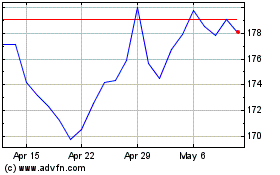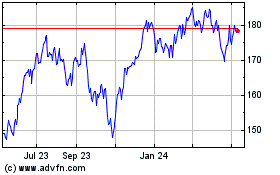As the economy rolls through its much-anticipated waves of
expansion and contraction, portfolio managers tend to rotate money
from some sectors to others depending upon what stage we are at in
the cycle. The trick, obviously, is knowing where you are at in the
cycle and how long that dynamic will continue before evolving into
another stage.
In an article this morning, The Economist magazine
addressed the length of the current recovery since the June 2009
recession trough at 42 months and whether or not job growth would
have a chance to really get rolling before the expansion ended.
They noted that since the end of World War II, the average
expansion has lasted 58 months, with the longest being the decade
from 1991 to 2001.
Since the 2001 to 2007 expansion is the fourth
longest at 73 months, it seems the odds are slightly in our favor
for this one to run a bit longer than 42 months. You would not
think so if you simply listened to the Economic Cycle Research
Institute whose analysis concludes that our economy has been in
recession for over six months already.
But what if the behavior of institutional investors
could predict the next recession better? We all know the cliche
here that the market has successfully predicted 9 of the last 5
recessions. And the past 3 years of market corrections are proof of
that.
Still, even if money rotating between sectors en
masse isn't a good predictor of recession, it may still provide
good swing trading opportunities. Below is the classic diagram of
sector rotation within the economic cycle, as often touted by Sam
Stovall of Standard & Poors.

One important theme that this analysis offers us is
that while any given bull market and its associated economic
expansion are definitely connected and feed off of each other, they
are not necessarily tied at the hip.
In other words, we know that the bear market often
bottoms before the recession does and the bull market can put in a
top before the recovery peaks.
Another thing to keep in mind is that the cycle and
sector rotation model is just that a rough guide to how the cycles
tend to work, not a mechanical blueprint. As my colleague Kevin
Matras reminds us...
"Each recession and recovery can look a bit
different however with its own unique set of characteristics.
The most distinguishing thing from this bull market
recovery and previous ones was the absenteeism of the housing
market. That seems fitting given it was the imploding housing
market that essentially caused the financial crisis and ensuing
recession in the first place.
Unlike previous recoveries, the housing market was
slow to respond this time around. And that, in turn, helped keep
the economy growing at only 2-2.5% on average, rather than the more
typical 4-5% as in recoveries past."
What else makes this recovery and bull market
completely unique? Unprecedented monetary stimulus and record low
interest rates for as far as the eye can see.
The arguments in favor of this bull cycle
continuing and avoiding recession are numerous:
Housing resurgence
Resilient consumer
Record corporate profits, and cash reserves
QE Infinity
Low interest rates and low inflation
Technological innovation
Energy independence
Healthcare boom
China soft landing and new regime leaning toward
stimulus
Steady growth that avoids boom-bust extremes (less
excess = more shallow contractions)
The last idea is another conclusion from Kevin
Matras.
Given this backdrop, I want to look at specific
sector and index relationships to see if we can get some clues
about the market's next moves. My assumption is that while it may
be too difficult to figure out if the economy is poised to give
corporate earnings a boost or a hiccup, we can at least follow
trends in sector money flow to time our trades for the next
quarter.
Relationship #1: Staples vs.
Discretionary
Below is a 3-year weekly chart which plots a ratio
of two sector ETFs against the S&P 500. The black and red line
is the ratio of the SPDR Consumer Staples ETF (XLP) over the SPDR
Consumer Discretionary ETF (XLY).
The ratio line is black when Staples are rising
relative to Discretionary, and it is red when the ratio is falling.
Plotted behind is the corresponding movement of the broad
index.

One thing that jumps out immediately is that when
the broad market is headed into a correction, money pours into
Staples at the expense of Discretionary. And when the market
bottoms and turns upward, money flows the other way out of safety
and into economically sensitive consumer areas.
As 2013 gets rolling, the ratio is below both
troughs of 2012 and is flirting with levels not seen since the bull
run tops of 2011. Note that all 3 of those prior lows were fairly
solid indicators for a market turn lower. Now this may be merely a
coincident indicator and not necessarily predictive.
But even for short-term swings in economic
sentiment, it seems to make sense that money could move this
quickly from safety to risk, and back, if there are genuine market
concerns about a contraction.
Relationship #2: Utilities vs.
Financials
Here we have a ratio SPDR XLU over XLF -- which
should show signs of topping if the cycle were near the later
stages of a bull market and economic expansion.

Why? Because safe Utilities would have been in
demand and risky Financials shunned as the recovery peaks, interest
rates rise, and mirages of recession are seen on the horizon.
Instead, we know the landscape is considerably
different for a few reasons...
1. Financials had a great 2012 (top-performing
sector near +25%) as Federal Reserve QE programs and low interest
rates continue to give them support.
2. But the XLF is still down nearly 45% over 5
years while the S&P is inching out new 5-year highs.
3. Utilities had a fire sale relative to the market
last year because of looming dividend tax increases.
Despite these exceptions, this is still a
relationship to watch. If the ratio starts moving back toward 2.5,
I would expect the market to be going the opposite direction. And a
move back into utility stocks in Q1 and Q2 of 2013 would not
surprise me at all.
The other big lesson here is that a brutally
crushed sector eventually fights its way back in a bull market.
Those investors waiting for their bank stocks like Citigroup, Bank
of America, and Goldman Sachs to regain their former glory could be
waiting a few more years.
But playing the sector as a whole finally turned
out to be a great idea as the XLF owned the top spot among sectors
for 3, 6, and 12 months with these returns as of January 4:
3-months: 6.3%
6-months: 18.3%
1-year: 23.7%
Relationship #3: Industrials vs.
Technology
This relationship is the least conclusive or
foretelling, but it does offer a unique window on equity sectors
that we may want to reference in the future.

Since Industrials and Technology can be subject to
effects found on the early-stage end of market-economic cycles, we
should not be surprised to see Industrials lead both advances and
declines in this steady-as-she-goes bull market, full of fits and
starts but generally trending higher.
The disconnect that stands out is the second half
of this year when Industrials continued to lose ground against Tech
after the spring swoon. Then they snapped back hard. A lot of this
was due to Apple's parabolic rise from May to September and then
its reversal as Tech in general saw a lowering of expectations.
The next turn lower in this ratio (money rotating
away from Industrials and into Tech) could signal further weakness
to come in the broad market as optimism about US manufacturing and
the rebound in emerging markets wanes and Tech picks up an
oversold, value bid.
But this is also one of those ratios that can go
sideways as the S&P rallies, as the rising tide lifts all
boats. Late 2010 and 2011 are proof of that tendency.
Relationship #4: Healthcare vs. Energy
Here's another one where you would expect a solid
correlation like that of Staples vs. Discretionary, as one side
speaks of safety and the other of growth.

The sector swings in 2010 and 2011 certainly bore
this out. But 2012 was a much different tale for two reasons that
flipped the conventional wisdom on its head.
First, the Energy sector is going through an
amazing phase of technological efficiency colliding with vast new
domestic supply. While crude oil spends most of the year under $100
per barrel, US exploration and production companies continue to
exploit new sources of oil and gas with advanced drilling and
recovery techniques like horizontal drilling and hydraulic
fracturing (aka "fracking").
This perfect storm of geology and technology has
seen North Dakota surpass the smallest OPEC member, Ecuador, in
daily production, keeping a lid on oil prices and integrated
margins.
Second, Healthcare in general has benefited from
the Patient Protection and Affordable Care Act, even while specific
industries like health insurance stumble. Coverage for more
Americans means higher revenues for hospitals and drug companies,
especially with an aging boomer population in need of more
care.
The reason we want to keep an eye on these two
sectors is for a possible reversion to the mean. As I write today,
oil prices are holding their own over $90 per barrel for the first
time in many weeks. If there is one sector that could play some
catch-up next year, it could be Energy.
Sector vs. Sector is Built on Industry vs.
Industry
In any of these relationships, which sectors the
money comes from and flows to is not always easy to figure out at
first. But with investors spending most of the fourth quarter of
2012 trying to anticipate the tax and spending policies which would
impact their favorite sectors the most, the first quarter of 2013
could be where big direction changes happen and new relationships
are in focus.
Another window to get an early gauge on sector
movement is the Zacks Industry Rank, which classifies over 250
industries and ranks them according to the earnings momentum of
their constituent stocks.
If you look at the top 50 to 75 industries in the
Zacks Industry Rank, you can get a good idea of where the earnings
momentum strength is. Right now, you should not be surprised to see
strength represented here by consumer companies (both staples and
discretionary), construction industries, medical/healthcare
industries, and financial companies.
When we see leadership change hands here, it's a
good sign that a shift is taking place in broader sectors too.
Bottom line: No matter which way the indexes go,
there will be solid relative value plays between the sectors to
take advantage of once the trends are identified or turning.
Kevin Cook is a Senior Stock Strategist with
Zacks.com
(SPY): ETF Research Reports
(XLE): ETF Research Reports
(XLF): ETF Research Reports
(XLK): ETF Research Reports
(XLY): ETF Research Reports
To read this article on Zacks.com click here.
Zacks Investment Research
Consumer Discretionary S... (AMEX:XLY)
Historical Stock Chart
From Jun 2024 to Jul 2024

Consumer Discretionary S... (AMEX:XLY)
Historical Stock Chart
From Jul 2023 to Jul 2024
